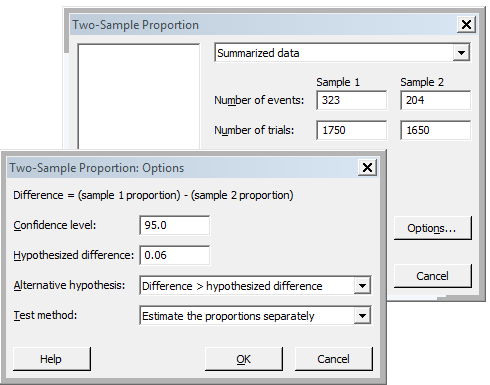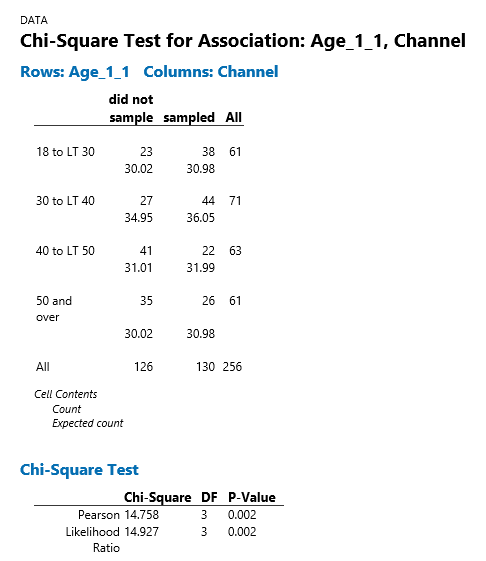


Susceptibility to a Type I Error (Producer’s Risk) or Type II Error (Consumer’s Risk) is greatest when the Test Statistic is close to the Critical Value. Conversely, Fail to Reject the Null Hypothesis when the Statistic is less than the Critical Value. Reject the Null Hypothesis when the “Staistic” (e.g., F Statistic) is greater than the Critical Value (e.g., F Critical Value). Meanwhile, an F or Chi-Squared “Statistic” is determined by the ratio of within variation (within subgroups) and between variations and is also impacted by the degrees of freedom. F Distribution and Chi-Squared Distribution analysis function the same way with the use of respective Degrees of Freedom tables to determine the Critical Value (the number of Rows and Columns determine the Critical Values in the table). To learn more about this topic study how the “F” or Chi-Squared distribution Critical Value and respective Statistics are calculated. The next step would be to investigate further and determine what Special Cause is driving a difference of Statistical Relevance (e.g., a “Rigged Coin” or a Gimmick in the process). The difference in values CANNOT be explained away as random chance. Rejecting the Null Hypothesis means your evidence from the test is strong enough to conclude the Alternative Hypothesis s more likely to be true. If the test Ch-Squared test result provided a p-value less than 0.05 (e.g., p=.001) then you would “Reject the Null Hypothesis”. Therefore, if testing at 95% Confidence, the alpha value would be 0.05 (e.g., 5%). When that improbability line is crossed the p-value will be less than the alpha value for the confidence level being tested at.
CHI SQUARE TEST MINITAB DRIVER
The coin toss wouldn’t be cited as having an assignable “Special Cause” driver until a specific threshold of improbability was met. If each coin was flipped 100 times would you necessarily get an equal distribution of Heads and Tails.probably not. Both coins could be “fairly” flipped (no trick coin and no gimmicks in the process. The expectation (expected value) is equal distribution of heads and tails. Thus, even though the number of 5 defaults for Branch 1 and 9 defaults for Branch B seems to be a meaningful difference they aren’t different enough to support the Alternative Hypothesis.įailing to Reject the Null Hypothesis with a Chi-Squared test for Independence and/or Proportions simply means the difference you are observing (e.g., in the default column) is just as likely to be a random chance as due to an assignable special cause. The results are telling you to “Fail to Reject the Null Hypothesis”. Some may be wondering, “So what does this analysis mean in practical terms?” There is an effect It's the change in the average value of the output caused by.= Variable A and Variable B are not independent Ha An alternative hypothesis (Ha) states that there is a s.There is no effect It's the change in the average value of the output caused by.Ho = Variable A and Variable B are independent.with the distribution that is expected if the variables are independent. because it measures how well the observed distribution of data fits Fitted values can also be known as fits. The fitted val. The Chi-Squared Test is also called the “goodness of fit” statistic A Sample Statistic, and a Population Parameter A sample for. The Chi-Squared Test is intended to test how likely it is that an observed distribution Used for determining the confidence interval for means or fo.

The Chi-Squared Test is used to determine if an Attribute or Discrete “X” has an association with another Attribute or Discrete “Y.” The example below is a hypothesis (or an educated guess) that there is a relationship in Loan Default Rates between Bank Branches.


 0 kommentar(er)
0 kommentar(er)
